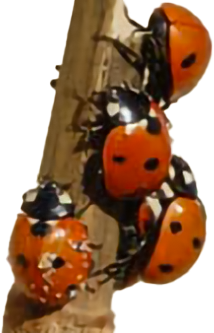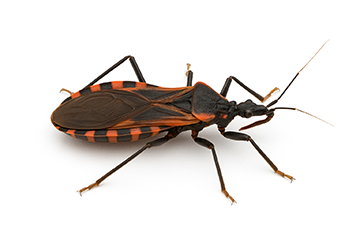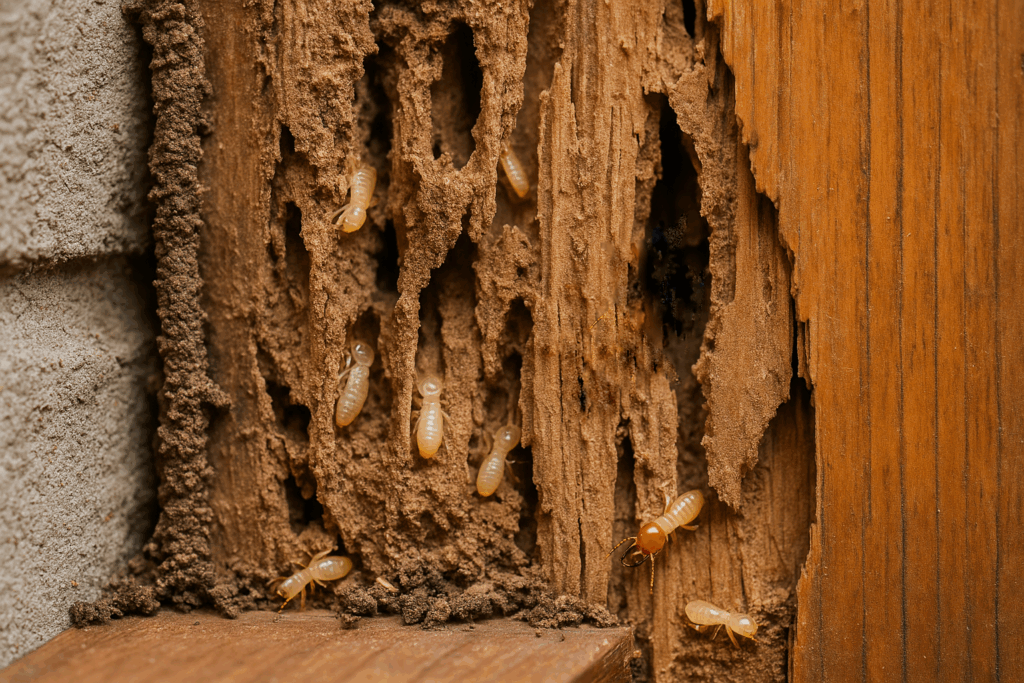
Rare but Not Impossible —
What Homeowners Should Know
Termites are often thought of as a warm-climate pest, so many Minnesotans assume “we don’t get termites here.” That’s mostly true — but not entirely. There are termites in Minnesota, particularly in the southern portions of the state, and changing climate conditions may shift their territory further north. This article explores the current state of termite risk in Minnesota, how that risk could evolve, what signs to watch for, and how to prevent or manage termite activity on your property.
How Rare Are Termites in Minnesota?
- According to the University of Minnesota Extension, termites are uncommon to rare in Minnesota, and are generally seen only in the southern third of the state. apps.extension.umn.edu+1
- In Ask Extension, the recurrent message is: “Termites are very uncommon in Minnesota.” Ask Extension+1
- Pest control firms describe termite presence as “documented in several parts of Minnesota,” though still rare and typically limited to southern zones. adamspestcontrol.com
So, while the idea that Minnesota is termite-free is an overstatement, the risk remains very low in most locales. For many homeowners—especially outside southern Minnesota—active termite control is not a priority. But for structures in the more vulnerable zones, awareness and preventive action make sense.
What types of termites live in Minnesota?
Eastern (Subterranean) Termites — the Primary Concern
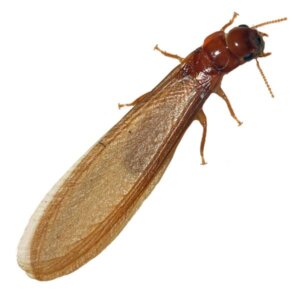
- The genus Reticulitermes (often R. flavipes) is the primary subterranean termite that is in Minnesota. 3Wikipedia+3termite.com+3
- These termites nest in soil, forage for wood (often underground or through “mud tubes”), and rely on moisture to survive. apps.extension.umn.edu
- In colder climates, colonies survive by staying below the frost line. USFS Research & Development+2termite.com+2
- In Minnesota, they tend to emerge as swarmers during spring, which is often the first visible sign a homeowner sees. apps.extension.umn.edu
- Because colonies may be slow-growing or limited by winter mortality, damage tends to accumulate over time and quietly. (In general termite biology) termite.com+2USFS Research & Development+2
Drywood Termites — Rare or Transient Concerns
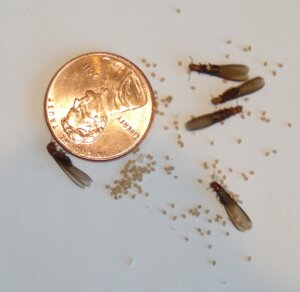
- Drywood termites are not considered established in Minnesota by extension experts. Ask Extension+
- But in other regions, drywood colonies live entirely inside wood and do not need soil contact, so they can be transported in furniture, crates, or wood products. University of Maryland Extension+2termite.com+2
- If a homeowner receives used furniture or crates from warmer areas, inspecting for frass (tiny fecal pellets) or damage is prudent.
Formosan Termites — A Watch-but-Not-Yet Threat
- The Formosan subterranean termite (Coptotermes formosanus) is a highly invasive, high-moisture species found in much of the U.S. south. LSU AgCenter+3Target Specialty Products+3ScienceDirect+3
- However, no confirmed Formosan colonies have been documented in Minnesota to date.+2termite.com+2
- Because they tend to establish especially in warm, humid zones, their northward expansion is a risk under climate change. FIU News+3USFS Research & Development+3PMC+3
In sum: for Minnesota homeowners, subterranean termites are the realistic concern, with drywood and Formosan species being watch items rather than immediate pests.
Why Rarity Isn’t the Same as Zero Risk
It is helpful to understand how subterranean termites manage to persist at the margins of colder climates:
- Below-frost-line nesting: Termite colonies that are deep enough to stay beneath the frost line survive winter. Those parts above that depth may die off. If winters become milder (shallower frost penetration), more of the colony may survive. USFS Research & Development+2termite.com+2
- Shallower frost lines & warming winters: Climate models suggest that warming may reduce frost depth over time, enabling more northern expansion or survival of colonies. USFS Research & Development+2PMC+2
- Faster summer growth: Higher summer temperatures can accelerate termite metabolism and growth, increasing colony expansion potential. CIRAD+3USFS Research & Development+3PMC+3
- Widened thermal tolerances: Research suggests some termite species adapt broader temperature tolerance ranges, which may assist colonists in climates previously marginal. Wiley Online Library
- Projected habitat expansion: Global models forecast that many termite species’ habitable ranges will increase under future climate scenarios, pushing into new zones. ScienceDirect+3PMC+3FIU News+3
- Connectivity / transport: Increased trade, shipping, and mobility can introduce termite species to new areas (especially drywood or parts) that might not otherwise reach naturally. neobiota.pensoft.net+1
Thus, while termites are currently rare northward, the combination of climate trends and mobility suggests the “safe buffer zone” may gradually shrink.
What are the signs of termite activity in Minnesota?
Because termite damage can be subtle, here are key red flags to watch for — especially in properties in southern Minnesota or ones with moisture challenges:
- Mud tubes (shelter tubes) along foundation walls, sill plates, or between soil and wood structural elements — subterranean termites use these to move.
- Winged swarmers or discarded wings — often seen indoors in spring; termites have equal-length wings (vs. ants, which have unequal).
- Wood damage: wood that sounds hollow or has tight galleries (internal tunnels), often with soil or mud present.
- Frass (pellets) — more associated with drywood termites; rarely encountered in Minnesota, but should not be dismissed if you’re moving used wood.
- Moisture issues or excessive decay — damp or decaying wood encourages termite access (though note moisture alone doesn’t mean termites).
- Confusion with ants: Carpenter ants are much more common in Minnesota and can mimic some signs (wood damage, winged ants). Use these distinctions:
If one or more of these signs appear, a professional termite evaluation is advised (especially since termites are rare locally—false positives are common).
How can I prevent termites in a cold climate?
While outright infestations are unlikely in much of the state, good practices go a long way in maintaining that status. Here’s what works best in Minnesota’s climate:
1. Moisture Management
- Ensure proper grade and drainage away from foundations so water doesn’t collect near walls.
- Fix leaks promptly, including plumbing, roof, gutters, and downspouts.
- Use drain tile or foundation waterproofing if your home has chronic moisture problems.
- Avoid mulch or soil piled against siding or foundation, which can act as conduits.
- Keep basements and crawlspaces dry with vapor barriers, dehumidifiers, ventilation, or sealing as needed.
Because subterranean termites need moisture, reducing it lowers the odds of any subterranean entry.
2. Structural & Landscaping Best Practices
- Maintain wood-free zones: no untreated wood (lumber, siding, firewood) in contact with soil or within several inches of the foundation.
- Store firewood away from the house, preferably off the ground and away from foundation walls.
- Use pressure-treated or termite-resistant wood in decks, porches, sills, and structural elements where practical.
- Avoid soil-to-wood contact in landscaping design (e.g., avoid planting woody shrubs flush to siding).
- During renovations, ensure moisture barriers and concrete footing details are designed to discourage ingress.
These strategies don’t cost much but reduce termite attractiveness and access.
3. Periodic Inspection & Monitoring
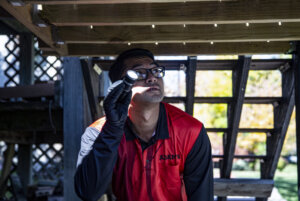
- In southern Minnesota or moisture-prone structures, schedule periodic inspections (e.g. every 2–3 years) by a qualified pest control professional.
- Consider monitoring stations or termite bait systems in shadow zones (between soil and structure) where termite activity might begin.
- Request written inspection reports that document observations, moisture issues, and risk zones.
Because termite incursions tend to start small and unnoticed, regular inspection is critical.
4. Professional Treatments & Response
- If termite activity is confirmed, treatment options include liquid soil-applied termiticides, baiting systems, or localized spot treatments.
- The right method depends on soil conditions, moisture, structure design, and local regulations.
- After treatment, follow-up inspection cycles are essential to detect re-infestation.
- In Minnesota, given the rarity, request clear identification of specimens (e.g. send termite samples to a university extension or Adam’s Pest ID) before large-scale treatment.
Because termite control can be costly and disruptive, confirmation before action is especially important in a low-risk region.
5. Vigilance with Imported Wood Products
- Inspect new or used wood furniture, crates, pallets, and lumber before bringing into your home.
- Look carefully at the inside of joints, seams, and cracks for signs of frass, internal galleries, or other irregularities.
- If you suspect drywood termite presence (rare locally), quarantine or treat suspect pieces before indoor use.
- Document and photograph any suspicious findings in case you need an expert.
This is a low-probability vector, but one with potential when dealing with used wood from warmer regions.
What If I Find Something Suspicious? (Next Steps)
- Don’t panic: termite damage requires sustained activity; one sighting may not confirm a colony.
- Capture a specimen for expert ID. Take a good, focused photo and email it to Adam’s, or bring the specimen to our offices for a free identification. Store the specimen in alcohol or a sealed plastic bag.
- Get a professional inspection, preferably from Adam’s Pest Control.
- Compare treatment proposals carefully—don’t accept high-cost work before you have confirmed the presence and species.
- After any treatment, maintain moisture control and monitor yearly to guard against recurrence.
The Bottom Line
- Termites in Minnesota are rare but not impossible—primarily in the southern tier, and only under the right moisture and habitat conditions.
- Subterranean (Reticulitermes) species are the primary concern; drywood and Formosan termites remain largely theoretical risks for now.
- Climate change (warmer winters, shifting frost lines, and faster summer growth) may push the termite risk zone further north over the coming decades.
- For now, homeowners can stay ahead with good moisture control, prudent structural practices, inspections in higher-risk zones, and careful handling of imported wood.
In short, Minnesota’s termite risk is low today, but vigilance is sound insurance for tomorrow.
For more information, visit Adam’s website.


